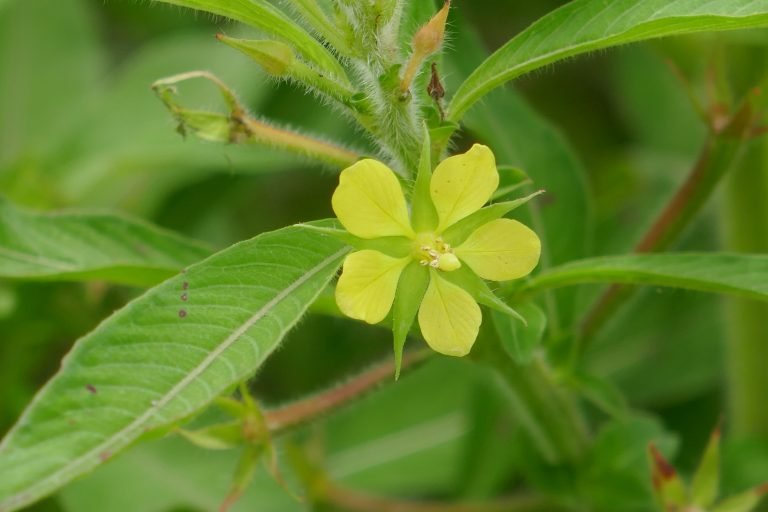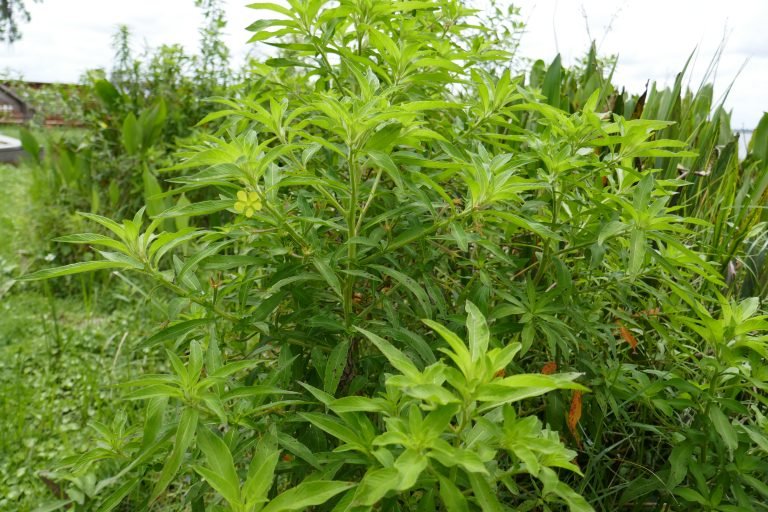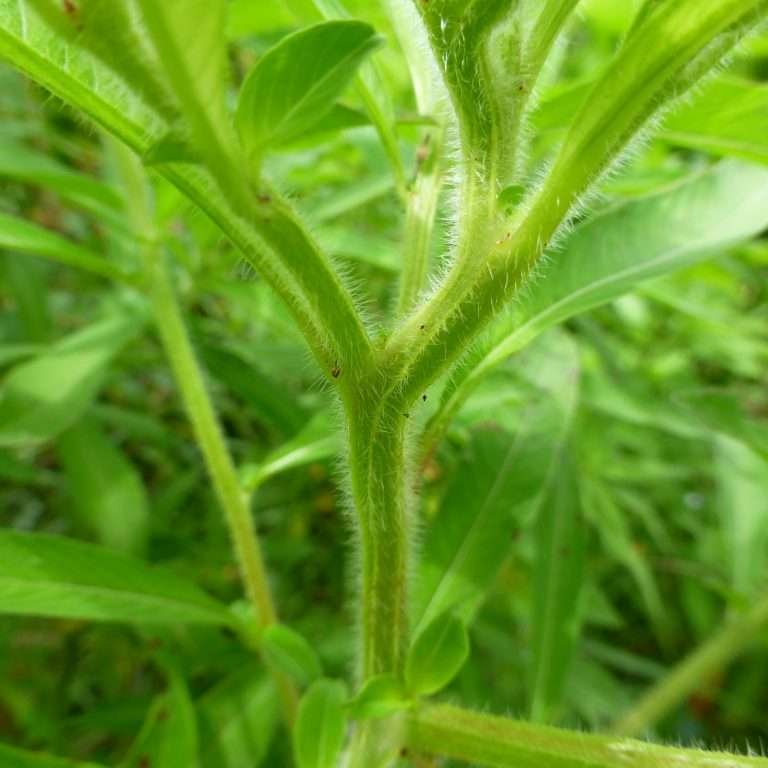Anglestem Primrosewillow

Anglestem Primrosewillow
Common Name: Anglestem primrosewillow
Latin Name: Ludwigia leptocarpa
Leptos means fine, thin, slender, weak and carpos means fruit. So it is the Ludwigia with the slender fruit.
Family: Onagraceae, evening primrosewillow family
Habit: It grows as a woody, multi-branched, herb that gets to a height of around 3 to 4 feet and just about as wide.
Leaves: The leaves are alternate and lanceolate with entire margins.
Flowers: The bright yellow flowers are born on long floral tubes and barely last a day with the petals falling one by one as the day progresses.
Flowers appear all year and at the same time as the seed pods mature.
The flowers have five petals, and sepals, rarely having six or seven. The number of petals is a distinguishing factor for this plant’s identification as well as the flower having ten stamens (or double the number of petals).
Seeds: The seeds are elongated, cylindrical, capsules that get to around 5 cm in length. The seed capsules turn a reddish color as they begin to mature which causes it to stand out from its surrounding foliage and adds some interest to the plant when it doesn’t have flowers.
Habitat: It occurs naturally in low areas such as wet roadside ditches, swampy areas, and riparian areas such as the margins of ponds, lakes, and rivers.
Landscape: In the home landscape anglestem primrosewillow grows in full sun to part shade with average to wet soils and can grow in standing water.
It is a good candidate for the banks of riparian areas to control soil erosion, or for drainage areas where it is difficult to landscape and maintain with lawn equipment.
If you enjoy natural landscaping and have problem wet areas it is an easy plant to maintain and grow.
Wildlife: A variety of pollinators use the flowers of angelstem primrosewillow including honeybees, bumblebees, and wasps.
Deer eat the foliage, and wood ducks occasionally eat the seeds. The foliage provides homes for many small insects such as spiders and lightning bugs.
Propagation: Achieved through rooting vegetative cuttings, seeds, or transplants. Cuttings root quite easily in water in only a few days.
You can purchase seeds for anglestem primrosewillow here at my Ebay store.

In Central Florida we have quite a variety of shapes and sizes of native primrosewillows. There is a tiny primrose willow, which grows as a ground cover, called piedmont primrose willow (Ludwigia arcuata) and another that is a very slender wildflower called seaside primrosewillow (Ludwigia maritima).
To see what our other native Ludwigia species look like follow the links to the Florida plant atlas entries for each individual species.
Ludwigia alata (winged primrosewillow)
Ludwigia arcuata (Piedmont primrosewillow)
Ludwigia curtissii (Curtiss’ primrosewillow)
Ludwigia decurrens (wingleaf primsrosewillow)
Ludwigia erecta (Yerba de Jicotea)
Ludwigia grandiflora (largeflower primrosewillow)
Ludwigia lanceolata (lanceleaf primrosewillow)
Ludwigia leptocarpa (anglestem primrosewillow)
Ludwigia linearis (narrowleaf primrosewillow)
Ludwigia linifolia (Southeastern primrosewillow)
Ludwigia maritima (seaside primrosewillow)
Ludwigia microcarpa (smallfruit primrosewillow)
Ludwigia octovalvis (Mexican primrosewillow)
Ludwigia palustris (marsh seedbox)
Ludwigia peploides (floating primrosewillow)
Ludwigia pilosa (hairy primrosewillow)
Ludwigia repens (creeping primrosewillow)
Ludwigia sphaerocarpa (globefruit primrosewillow)

